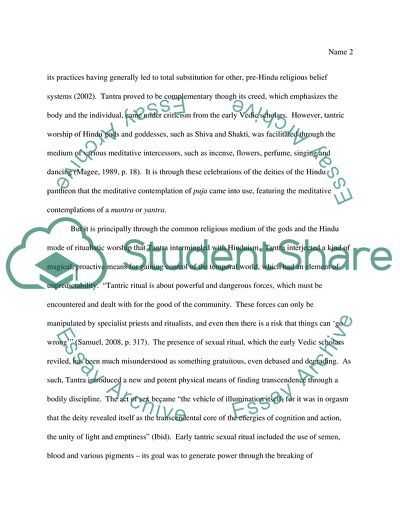Cite this document
(Tantra and Hinduism: Shared Philosophy, Common Faith Essay Example | Topics and Well Written Essays - 1500 words, n.d.)
Tantra and Hinduism: Shared Philosophy, Common Faith Essay Example | Topics and Well Written Essays - 1500 words. https://studentshare.org/religion-and-theology/1769443-discuss-how-tantra-incorporated-into-itself-various-aspects-of-the-three-modes-of-hinduism
Tantra and Hinduism: Shared Philosophy, Common Faith Essay Example | Topics and Well Written Essays - 1500 words. https://studentshare.org/religion-and-theology/1769443-discuss-how-tantra-incorporated-into-itself-various-aspects-of-the-three-modes-of-hinduism
(Tantra and Hinduism: Shared Philosophy, Common Faith Essay Example | Topics and Well Written Essays - 1500 Words)
Tantra and Hinduism: Shared Philosophy, Common Faith Essay Example | Topics and Well Written Essays - 1500 Words. https://studentshare.org/religion-and-theology/1769443-discuss-how-tantra-incorporated-into-itself-various-aspects-of-the-three-modes-of-hinduism.
Tantra and Hinduism: Shared Philosophy, Common Faith Essay Example | Topics and Well Written Essays - 1500 Words. https://studentshare.org/religion-and-theology/1769443-discuss-how-tantra-incorporated-into-itself-various-aspects-of-the-three-modes-of-hinduism.
“Tantra and Hinduism: Shared Philosophy, Common Faith Essay Example | Topics and Well Written Essays - 1500 Words”. https://studentshare.org/religion-and-theology/1769443-discuss-how-tantra-incorporated-into-itself-various-aspects-of-the-three-modes-of-hinduism.


